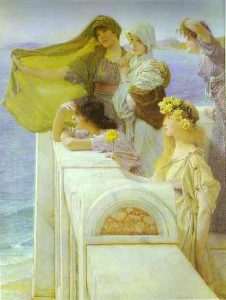Romans 4:1-5, 13-17
This text is used for the Lectionary Year A on March 12th, 2017.
 When the apostle Paul wrote the Book of Romans he had never been to Rome. In spite of that unusual fact, he knew the Romans. The Romans included a unique mix of Roman citizens, non-citizens, Greeks, Jews, barbarians, educated and non-educated persons. Rome appeared to many as the center of the world. Roman power, government, law, oppression, and the Roman penchant for keeping Romans happy with a supply of bread and entertainment known as the circuses kept the Romans in order and believing in the Roman ideal. “When in Rome do as the Romans do,” while a cute phrase for today’s culture, became a way of life for Romans. Put simply, you did not want to violate Roman law and protocol because to do so involved harsh consequences.
When the apostle Paul wrote the Book of Romans he had never been to Rome. In spite of that unusual fact, he knew the Romans. The Romans included a unique mix of Roman citizens, non-citizens, Greeks, Jews, barbarians, educated and non-educated persons. Rome appeared to many as the center of the world. Roman power, government, law, oppression, and the Roman penchant for keeping Romans happy with a supply of bread and entertainment known as the circuses kept the Romans in order and believing in the Roman ideal. “When in Rome do as the Romans do,” while a cute phrase for today’s culture, became a way of life for Romans. Put simply, you did not want to violate Roman law and protocol because to do so involved harsh consequences.
The church started, more than likely, near the Jewish synagogue. Church planters taught the Christian basics of Jesus’s death, burial, resurrection, and how to live as a Christian. The whole realm of Christianity appeared foreign to Roman officials and to next door neighbors. What was Christianity? Was it a form of Judaism with its special practices of feast days, Sabbath rites, and dietary restrictions (Romans 14)? Or was it a religion altogether different from Judaism? And, if the church started near the synagogue and many of the first Christians in Rome were Jews, who and what kind of person should the church welcome (Romans 14:1; 15:7). Whom to welcome into the church and how to relate to others who had become Christians created questions and even problems in the church. Never mind that the answer to such a question and problem should be simply solved both then and now, the reality of “other” people different than them stirred controversy and conflict in the church.



